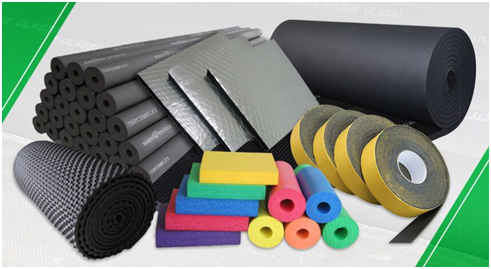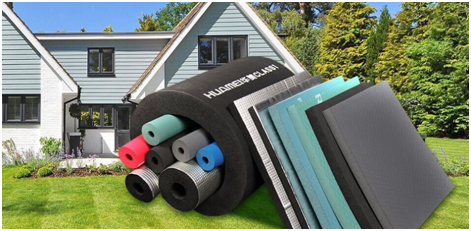E-mail: marketing@hbhuamei.com

In today's bustling world, the importance of creating peaceful and comfortable living and working spaces cannot be overstated. Acoustic materials play a crucial role in achieving this goal by reducing noise pollution and enhancing sound insulation. Among the variety of acoustic materials available, glass wool and rubber foam stand out for their remarkable sound-absorbing properties and versatile applications. In this article, we delve into the benefits and applications of glass wool and rubber foam as acoustic materials.
Glass wool, a fibrous material made from recycled glass, is widely recognized for its excellent sound-absorbing capabilities. Its intricate fiber structure traps sound waves, converting them into heat energy. This makes glass wool an ideal choice for spaces where noise reduction is essential, such as recording studios, auditoriums, and office environments.
High Absorption Coefficient: Glass wool exhibits a high sound absorption coefficient across a wide frequency range, effectively minimizing both airborne and impact noise.
Versatility: It can be used in various forms, including panels, batts, and boards, allowing for customization based on specific acoustic requirements.
Fire Resistance: Glass wool is inherently fire-resistant, making it a safe option for spaces where fire safety is paramount.
Eco-Friendly: Made from recycled glass and natural minerals, glass wool contributes to sustainable building practices.
Glass wool finds applications in both residential and commercial settings:
Home Theaters: Glass wool panels can be used to create a cinematic experience at home by reducing sound reflections and enhancing audio clarity.
Open-Plan Offices: Glass wool partitions or ceiling panels help mitigate the noise in open-plan office spaces, improving concentration and productivity.
Auditoriums and Concert Halls: Glass wool effectively absorbs sound reflections, ensuring optimal acoustic conditions for performances.
Rubber foam, another versatile acoustic material, is known for its flexible and lightweight nature. It is commonly used for both sound absorption and vibration dampening.
Vibration Dampening: Rubber foam's elasticity helps absorb vibrations, making it suitable for machinery enclosures and industrial settings.
Flexibility: Rubber foam can be easily shaped and cut to fit various spaces, making it suitable for irregular surfaces.
Moisture Resistance: Rubber foam's closed-cell structure makes it resistant to moisture, ensuring its long-lasting performance.
Easy Installation: Its lightweight nature simplifies the installation process, making it suitable for DIY projects.
Recording Studios: Rubber foam panels effectively minimize sound reflections and echoes, creating a controlled recording environment.
HVAC Systems: Rubber foam is used to line air ducts and equipment to reduce noise generated by heating, ventilation, and air conditioning systems.
Gymnasiums: Rubber foam mats placed under exercise equipment absorb impact noise, ensuring a quieter workout space.
In the pursuit of serene and productive environments, acoustic materials like glass wool and rubber foam emerge as essential tools. Their unique properties contribute to noise reduction, sound insulation, and improved acoustic quality in a range of settings. Whether creating a peaceful home theater or enhancing the acoustic performance of a large auditorium, these materials demonstrate their ability to transform spaces into havens of tranquility and clarity.

Huamei Energy Saving Technology Group is situated within the central area of the Beijing-Tianjin-Hebei Province. It specializes in the manufacturing of rubber foam insulation materials, glass wool products, extruded polystyrene insulation boards (XPS), and various other thermal insulation products. The production capacity of rubber foam insulation materials exceeds 1.7 million cubic meters, while fiberglass wool products boast an annual capacity surpassing 400,000 tons. Additionally, the annual production capacity for produced polystyrene thermal insulation boards (XPS) exceeds 500,000 cubic meters. In the present era of global energy conservation and environmental protection, Huamei has firmly established itself as a regional leader in eco-friendly building solutions, thanks to its cutting-edge production technology and industrial prowess.
Please contact us for product catalog and quotation!
Copyright © Huamei Energy-saving Technology Group Co., Ltd. All Rights Reserved | Sitemap | Privacy Policy
Insulation solutions LIST: Insulation solutions LIST